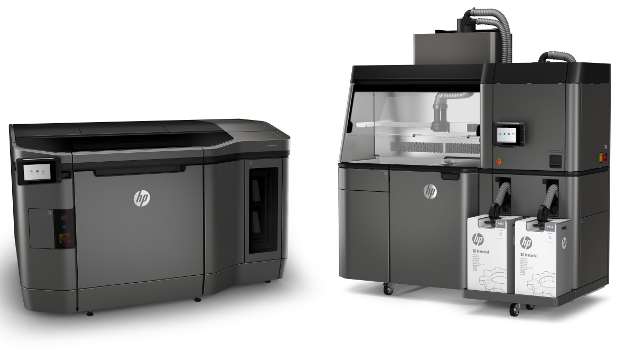After announcing its first revenue from sales, HP Inc. has said it is now focused on scaling up its Multi Jet Fusion 3D printing business that it believes will rival standard manufacturing technologies, such as injection moulding.
While HP is planning some direct sales of its new Jet Fusion printer line-up, the vast majority of the machines will be sold through about 30 resellers in North America and Europe, where the company is focusing its attention.
What is interesting “is 80% of these channel partners are new for HP,” Steven Nigro, president of HP’s 3D Printing business, said during a press and analyst briefing.
Reference centres
HP also has more than a dozen 3D Printing Reference and Experience centres throughout the US and Europe where potential customers can test the industrial 3D printing product. HP made the announced today at the RAPID 2017 additive manufacturing conference in Pittsburgh.
HP claims its Multi Jet Fusion 3D printers will enable mass production of parts through additive manufacturing (3D printing), instead of rapid prototyping, for which the technology is typically used. The new printers are unlikely to be used to produce millions or billions of production parts. Think, instead, in terms of hundreds, thousands or tens of thousands of parts, HP said.
The printer works by first depositing powder (about 100 microns thick, or the thickness of a standard sheet of paper) onto a print bed using a print bar that looks like a scanning bar on a typical 2D printer. The print bar has 30,000 nozzles spraying 350 million fusing agent droplets per second in specific patterns as it moves back and forth across a print platform.
A detailing fusing agent is sprayed around the edges of a printed object, giving it “sharp” details.
Revolutionary
HP has said its 3D printers will be revolutionary in that they will be able to print electronics into the parts they create through the use of conductive materials printed at the voxel level. Like a pixel in a display, a voxel in 3D printing is a tiny cube, millions of which make up a larger object. A single voxel is 50 microns in size.
HP’s Jet Fusion printers have a print area or a print bin of 16-in. x 12-in. x 16-in. Within that area, there are 2.4 teravoxels (a teravoxel is a trillion voxels).
In the first quarter of 2017, HP CEO Dion Wiesler said for the first time the company “recognised revenue” from sales of the Multi Jet Fusion 3D printers, marketing a “milestone for 3D printing.”
“Took an order, delivered, accepted and received payment for first 3D printer units,” Wiesler said in a 11 February earnings call.
HP originally unveiled its Jet Fusion printer in October 2014.
Taking orders
At last year’s RAPID 3D additive manufacturing conference, HP said it had begun taking orders for its first 3D printer, the HP Jet Fusion, which it claimed is 10 times faster than existing machines and can cut the cost of manufacturing parts in half.
HP is selling two models of its Jet Fusion printer: the lower-cost and lower-production 3200 series and the 4200 series. The 4200 series began shipping to manufacturers in October; the 3200 series will be available in mid-2017.
The Jet Fusion printers start at $130,000 (€119,053), but a complete system, including post processing station, will run as high as $200,000 (€183,160), according to Nigro.
During the press conference, HP did not answer questions about how many systems it has sold or how much revenue it has generated to date.
Nigro, however, said in order to gain traction in the $12 trillion (€10.9 trillion) manufacturing marketplace, 3D printers would have to create standards to achieve greater print consistency and machine uptime, move away from proprietary print materials and reduce their costs.
Open platform
HP has created an open platform where other companies can collaborate on materials innovation as well as new software for its 3D printers.
The goal of HP’s open platform, Nigro said, is to continue to reduce 3D printing costs, increase industry adoption and create an open-source platform for certified 3D materials that work with its products.
A network of development partners that already includes BASF, Arkema, Lehmann & Voss & Co., Evonik and SigmaDesign, now has Henkel AG & Co., a German adhesives manufacturer, in the mix.
“They’re a natural fit with 3D printing because [adhesives] are another way to bring parts together,” said Nigro, who added that “50 other material companies” have expressed interest in partnering with HP to develop new printing inks.
The company also announced it has signed with at least four product engineering companies and service providers that are using Jet Fusion printers to manufacture parts on request for customers. Those companies include: Fast Radius, SigmaDesign, Shapeways and Materialise.
“You can go to them and buy parts built using Multi Jet Fusion technology,” Nigro said.
IDGNS





Subscribers 0
Fans 0
Followers 0
Followers